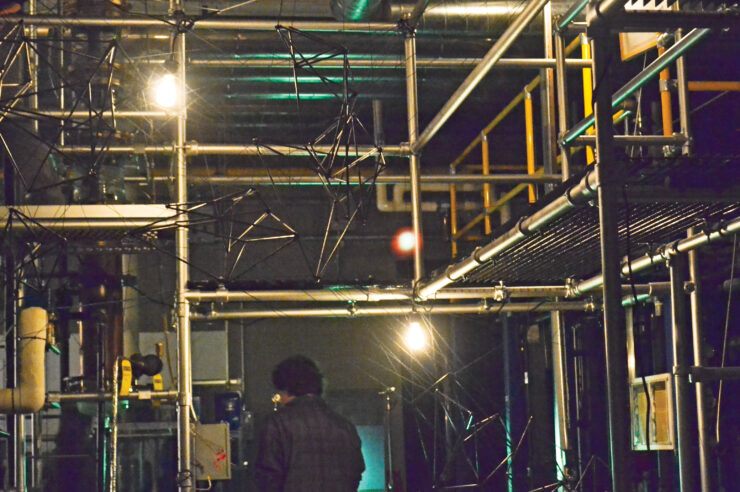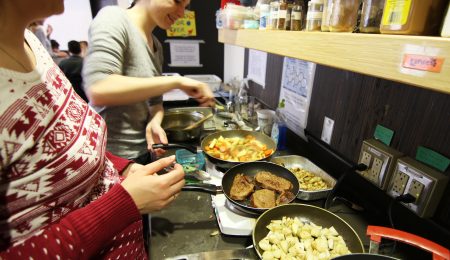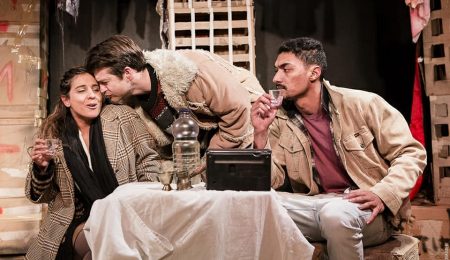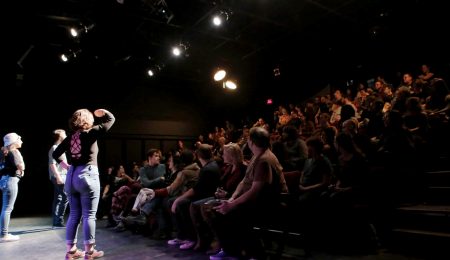Visual arts students combine art, science, and engineering for one-night exhibit
The night of Dec. 4 was not an ordinary night for Colonel By Hall’s fourth floor chemical engineering lab. Placed amongst the myriad of engineering tools were art installations, the product of an ambitious project to combine engineering and science principles and present them in an artistic way, entitled Construct.
“We went with Construct as a title because it’s broad enough we can have the construct(ion) of things, and you think of deconstruction, you think of the process of creation, which altogether represents all the artists we have here,” says Renaud Delaquis, a fourth-year visual arts student who helped curate the exhibit as part of his curating for contemporary art class.
The exhibit was a collaboration between the Department of Visual Arts and the Faculty of Engineering, making for a unique and unusual exhibit.
“Certainly an element of technology and art are coming together in a really interesting, new field, and that sort of forces the science sort of mindset into it,” says Kelsey Shore, a second-year visual arts student. Shore blended science and art in her installation depicting colony collapse disorder, and the confusion bees feel when exposed to certain neurotoxins being put into the environment.
The works of eight artists were featured, with themes ranging from a found-sound installation done by Ottawa-based experimental composer Jeff Morton, who recorded the sounds of the chemical engineering lab and turned them into a piece of music that played all night, to University of Ottawa alumna Annie Thibault’s exhibit which traced the movements of a euglena plankton, creating a piece of organic art capturing the random motion of a microorganism.
The collaboration between art and science was natural and probably destined to happen. The curators chose the space based on the similarities between artists and engineers.
“All my friends who are engineers just build anything, and artists like building stuff as well, so together they have a perfect mix,” says Delaquis.
Delaquis said he and the other curators knew many of the artists they wanted in the exhibit, having been around them for years, and left a few spots open for new entries. The resulting list of artists was a diverse mix of current students, past graduates, and local artists.
Of course, the exhibit didn’t just fall into place—the curators, for whom this exhibit was their final project, had to find a way for each individual installation to interact with the others in a way that highlighted each piece. They had to create flow to the space, but also wanted the viewer to interact with the space itself.
“We’re not just doing this for ourselves, we’re doing this for engineers, we need to draw them in, we need to show them something that they want to see,” says Delaquis. “You want to go into this place and not just look at very minimalist drawings.”
Delaquis and the other curators’ goal to attract engineers seemed to have been a success, with many of them in attendance. Ultimately, this event will hopefully work towards the curators’ goal of creating a dialogue between the science and art communities.





